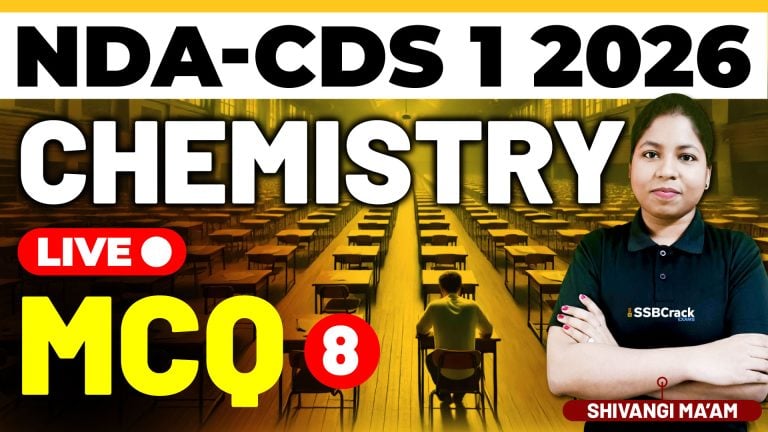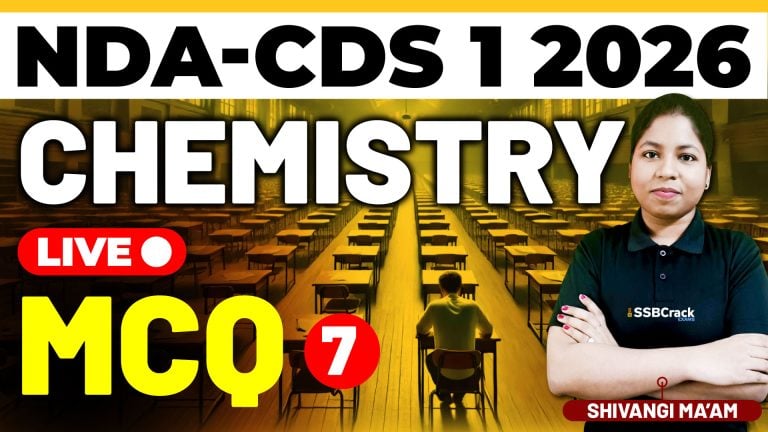With the NDA (National Defence Academy) and CDS (Combined Defence Services) 1 2025 exams approaching, Chemistry is one of the core subjects that can significantly contribute to an aspirant’s overall performance. Among the wide range of topics within the Chemistry syllabus, understanding the properties and preparation of industrial materials like glass, cement, paint, and safety matches is crucial. These topics not only form a key component of the chemistry syllabus but also have broader applications in both civil and military domains.
In this article, we’ll explore why these topics hold immense importance for NDA and CDS aspirants, how they link to real-world applications, and why mastering them is essential for success in the 2025 exams.
1. Glass: Properties and Preparation
Glass, a versatile and widely used material, plays a fundamental role in both everyday life and specialized military applications. Aspirants must understand its chemical composition, preparation methods, and properties for several reasons:
- Military and Defense Applications:
- Glass is used in optical devices like binoculars, periscopes, and even in ballistic glass for armored vehicles. Knowledge of how glass is made and its properties, such as transparency, strength, and thermal resistance, can give aspirants a technical edge in understanding how such materials function in military settings.
- Exam Relevance:
- The properties and preparation methods, such as fusion of silica (SiO₂) with alkali, might feature in theoretical and practical questions in the NDA and CDS exams. Understanding the chemical reactions involved and the role of additives like lime or boron in modifying glass properties can be crucial for tackling these questions.
2. Cement: Properties and Preparation
Cement, one of the most critical building materials, is used in the construction of infrastructure, including military bases, bunkers, and airstrips. Aspirants need to grasp the chemistry behind cement for the following reasons:
- Infrastructure and Engineering:
- The armed forces are heavily involved in the construction and maintenance of secure and stable infrastructure. Understanding the process of cement production—such as the calcination of limestone (CaCO₃) to form clinker and the role of gypsum in regulating setting time—is invaluable for aspirants, particularly those interested in engineering branches of the armed forces.
- Chemical Reactions and Environmental Impact:
- The chemical reactions involved in the hydration and hardening of cement, including exothermic reactions and the formation of calcium silicate hydrate, can appear in exam questions. Additionally, topics like the environmental impact of cement production (e.g., CO₂ emissions) may also feature, linking chemistry to broader global issues.
3. Paint: Properties and Preparation
Paint, which might seem like an ordinary material, has far-reaching implications, especially in military and defense settings. Learning about its properties and preparation is important for several reasons:
- Protective Coatings and Camouflage:
- Paints are essential not just for aesthetic purposes but also for protection against corrosion, weathering, and chemical damage, particularly for vehicles, ships, and equipment. Camouflage paint, used in military operations, is another vital aspect. Aspirants need to understand the chemistry behind different types of paints, such as oil-based, latex, and epoxy paints, and how they provide protective coatings.
- Exam Applications:
- Questions related to the components of paint (pigments, binders, solvents, and additives) and their roles may appear in both theoretical and MCQ sections of the exams. Aspirants must also understand how different types of paint interact with surfaces and environmental conditions, which can be examined in problem-solving questions.
4. Safety Matches: Properties and Preparation
The chemistry behind the preparation and functioning of safety matches is a fascinating topic that integrates knowledge of chemical reactions, material science, and practical applications. For NDA and CDS aspirants, understanding safety matches is important for these reasons:
- Combustion and Chemical Reactions:
- Safety matches function through the controlled initiation of combustion, which involves red phosphorus, potassium chlorate, and other chemicals. Understanding these combustion reactions provides insight into broader concepts of chemical energetics and oxidation-reduction reactions, both of which are fundamental topics in Chemistry.
- Practical and Tactical Relevance:
- The ability to start controlled fires has practical military implications, from survival situations to the controlled use of explosives. Knowledge of how safety matches are prepared and why they are safer than traditional matches due to their non-friction ignition can also appear in chemistry-based questions related to safety and materials science.
Why These Topics are Crucial for NDA & CDS Aspirants
- Foundation of Material Science:
- Aspirants aiming for the NDA and CDS exams must build a strong foundation in material science, as materials like glass, cement, paint, and safety matches are not only critical in civil applications but also have military relevance. Understanding the chemical processes behind their preparation and properties provides aspirants with a deeper appreciation of how chemistry affects real-world applications in defense and beyond.
- Relevance in Exam Questions:
- The NDA and CDS exams include both theoretical and objective questions that require a sound understanding of chemistry topics. Concepts related to the chemical composition, preparation methods, and properties of glass, cement, paint, and safety matches can frequently appear in the exams, making these topics highly relevant for achieving a competitive score.
- Practical Implications in Defense Roles:
- Beyond the exam, aspirants who eventually join the armed forces may find themselves in roles that require knowledge of materials used in construction, repair, and maintenance of military infrastructure or equipment. A clear understanding of how materials like glass and cement are made and used in real-life applications is essential for engineers and technical officers in the defense sector.
Conclusion
As NDA and CDS 1 2025 aspirants prepare for their exams, focusing on the properties and preparation of materials like glass, cement, paint, and safety matches is not just about covering a syllabus—it’s about developing a practical and theoretical understanding that can be applied in real-world defense scenarios. These topics bridge the gap between pure chemistry and material science, offering insights into everyday materials with high military significance.
Mastering these topics can enhance aspirants’ confidence in tackling chemistry questions in the upcoming exams, while also laying the groundwork for their future roles in India’s defense forces. By understanding the chemistry behind these essential materials, aspirants equip themselves with knowledge that is both academically valuable and practically applicable in their careers.



















